Wood vs Plastic: Choose A Wood Cutting Board Every Time
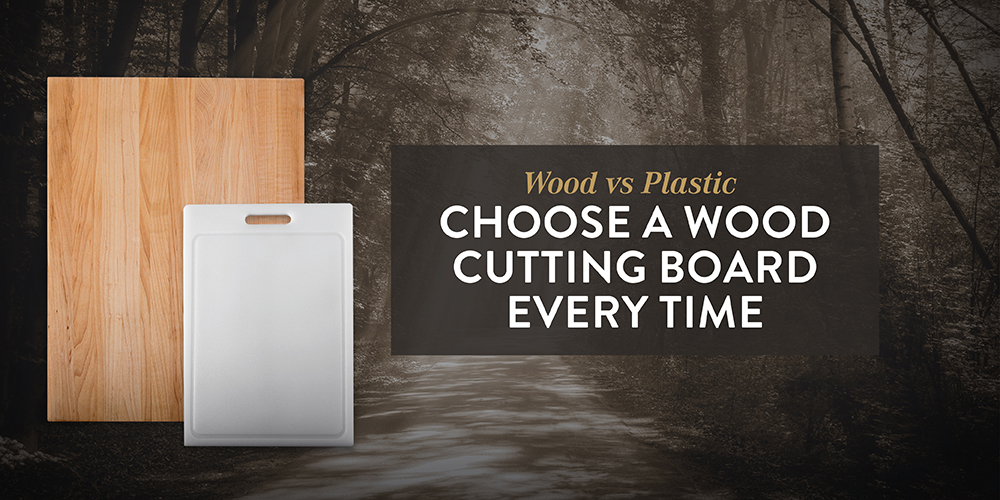
Wood vs Plastic: Choose A Wood Cutting Board Every Time
When it comes to selecting cutting boards for your kitchen, the choice between wood and plastic goes beyond mere aesthetics. Opting for a wood cutting board can bring a range of benefits that extend beyond the surface. The decision hinges on factors such as knife-friendliness, safety and sanitary practices, durability, sustainability, and the over-all culinary experience. In this article, we delve into the reasons why a wood cutting board is more desirable over its plastic counterpart.
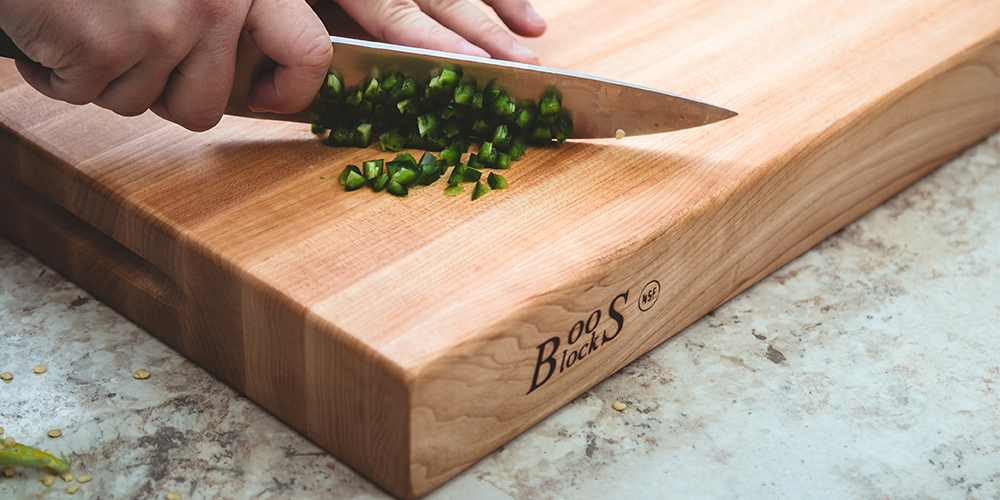
Durability/Knife Blade Wear: Wood cutting boards are renowned for their knife-friendly nature, offering a gentler surface that preserves the sharpness of your knives over an extended period compared to plastic alternatives. Wood has self-healing properties. When you cut into a wood surface, the fibers close up after the knife glides through its surface. Premium crafted hardwood cutting boards, like Northern hard rock maple, American cherry and American black walnut, exhibit impressive durability and resilience against knife marks and scratches. Plastic cutting boards can be harsh on knife blades, causing them to dull more quickly compared to cutting on wood. Plastic cutting boards are more susceptible to wear and damage than wood surfaces.
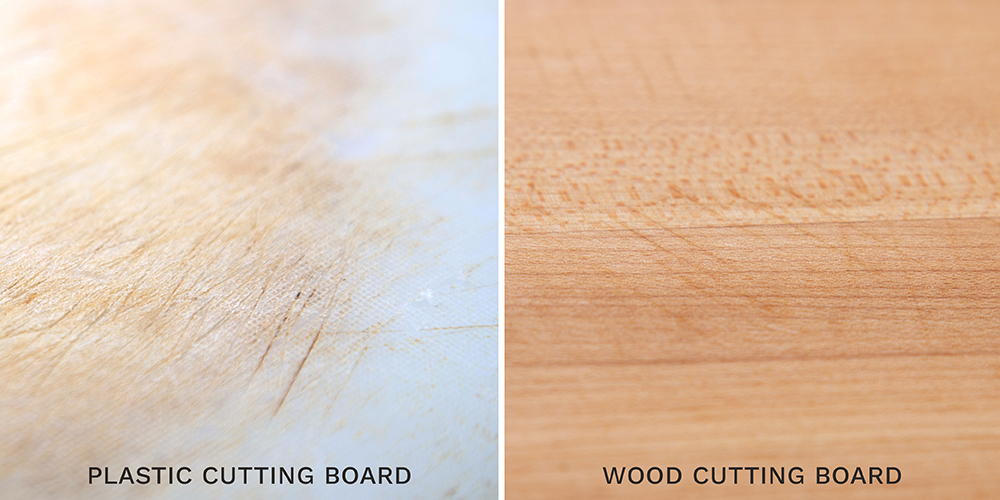
Hygiene and Food Safety: Studies indicate that wood cutting boards possess natural antibacterial properties, inhibiting bacterial growth on the cutting board’s surface. The porous quality of wood contributes to an added antibacterial effect. The juices are wicked into the wood fibers and away from the cutting surface where the natural enzymes in the wood inhibit bacteria growth. Hard Rock Maple is a premium wood used in crafting Boos Block® cutting boards and is considered food-safe and non-toxic. Furthermore, the tight grain pattern of Hard Rock Maple contributes to its resistance to bacteria. The close-knit grain minimizes the chances of food particles, liquids, and bacteria getting trapped within the wood. It is a good rule of thumb to own separate cutting boards for different types of food. One for raw meat and another for vegetables to further prevent cross-contamination. Regular cleaning, thorough drying, and occasional oiling are essential steps in ensuring the hygienic nature of a wood cutting board. The cuts and grooves created when using a plastic cutting board can provide a conducive environment for bacteria to thrive. Even with regular cleaning, it can be more challenging to eliminate bacteria from these surface imperfections. Research out of the University of Illinois adds further credibility to the hygienic benefits of using Block® cutting boards (Stackler, 2019). The study conducted by Mechanical Science and Engineering Professor Nenad Miljkovic and his research laboratory at the University of Illinois, found that the NSF listed Northern Hard Rock Maple cutting boards by John Boos & Co. kill bacteria. Data gathered by the team concluded that application of the NSF listed Block® Mystery Oil and Board Cream on the boards created an antimicrobial, hydrophobic surface that decreased their surface bacteria to a ‘clean level’ in just three hours. The Boos Block® Mystery Oil and Board Cream form two layers of protection to create an antimicrobial surface. First, the Block® Mystery Oil and Board Cream create a hydrophobic surface by allowing the bacterial fluids to bead up off the surface of the wood and reduce the interaction time the meat fluids can have with the board, thus reducing the adhesion of the bacteria in the fluid to the board. Second, any remaining fluid that may be left behind that did not bead off the surface of the wood in then absorbed into the wood fibers via the Mystery Oil in the board, where the natural occurring enzymes in the Northern Hard Rock Maple kill any remaining bacteria.
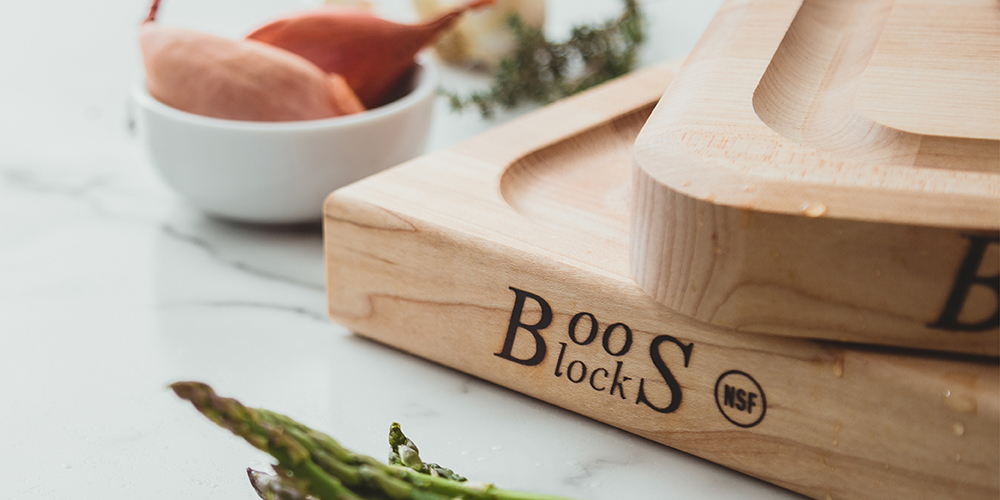
Certifications: NSF (National Sanitation Foundation) is an accredited, third-party certification organization that tests and certifies products to verify they meet public health and safety standards. Products that meet these standards bear the NSF mark, which is respected by consumers, manufacturers, retailers, and regulatory agencies at the local, state, federal and international level. Boos Block® cutting boards that are NSF certified include the following models:
Maple R-Boards / Model R01, R03, R02
Maple RA-Boards / Model RA01, RA02, RA03, RA06
Maple BBQ Cutting Board with Juice Groove / Model BBQBD
Maple Deluxe BBQ Cutting Board with Juice Groove / Model RA02-GRV
Maple AUJUS Cutting Board with Juice Groove / Models AUJUS2015, AUJUS
Maple Chop-N-Slice Series Cutting Boards with Eased Corners / Model 211, 209, 215, 212, 213, 214
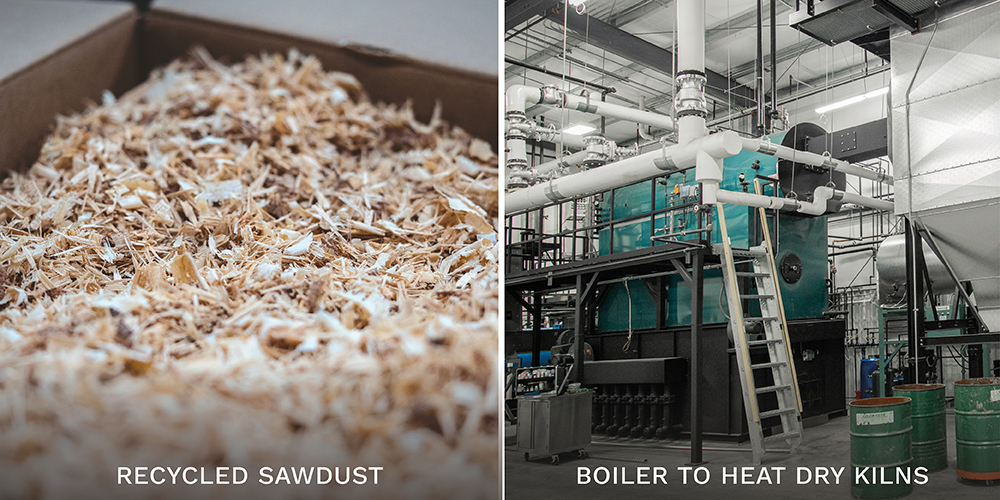
Environmental Impact: Boos Block® cutting boards are crafted of solid hardwood sourced within the U.S. from responsibly managed forests. The sawdust and scrap wood is recycled and reused in the manufacturing process to heat the kilns that dry the wood that is used to make more Boos Block® gourmet wood products. Local farmers also use sawdust from the manufacturing of wood cutting boards for livestock bedding. John Boos & Co. demonstrates the use of abundant sustainable renewing timbers in their products as practiced by NHLA Members. Their hardwood foresters follow professional best practices that mirror natural forces. Individual trees are selected for harvest, encouraging forests to renew and regenerate themselves naturally and prolifically. Plastic cutting boards are made from non-biodegradable materials, contributing to environmental concerns. Some plastics may leach harmful chemicals, especially when exposed to heat or harsh cleaning agents. Also, when plastic cutting boards reach the end of their lifespan, they are non-recyclable, adding to the issue of plastic waste in landfills.
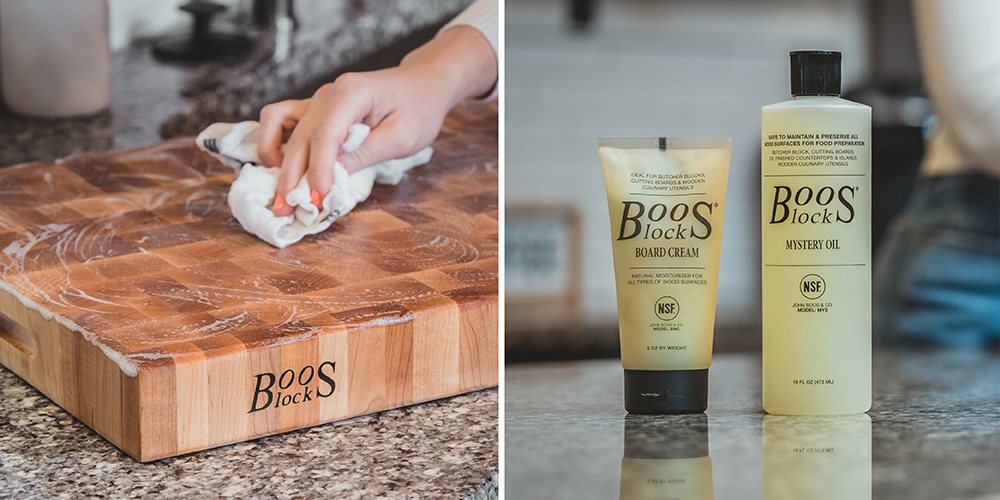
Repairability: Wood cutting boards can be sanded down with the grain of the wood with a fine grit sandpaper, oiled, and refinished if it incurs damage or cut marks over time.
Cleaning Practices: Cleaning a wood cutting board is simple. Wash the board with warm, soapy water after each use to remove any food particles. Dry thoroughly with a clean towel and stand it on end against a backsplash to allow air to flow on all sides, allowing the wood board to completely dry. Once completely dried, store flat. While plastic cutting boards can be placed in a dishwasher, chances are it may not get clean deep down inside the knife marks to remove harmful bacteria.
Maintenance with Oil: Periodically treating your wood cutting board with Boos Block® Mystery Oil and Board Cream, a natural food grade mineral oil and beeswax solution, will help maintain its integrity and create a protective barrier. This also helps prevent the growth of bacteria and minimizes the absorption of liquids and odors into the wood. It is recommended to oil the cutting board upon receiving it and then every 3-4 weeks to keep the wood fibers moisturized and in perfect condition.
Stackler, J. (2019, July 17). Miljkovic validates antimicrobial properties of Illinois Company’s cutting boards. The Grainger College of Engineering Mechanical Science & Engineering. https://mechse.illinois.edu/news/miljkovic-validates-antimicrobial-properties-illinois-companys-cutting-boards